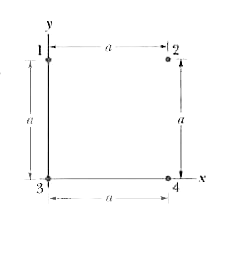Name the subatomic particle whose relative charge is :
(a) +1 (b) -1 (c) 0.
Step by step video, text & image solution for Name the subatomic particle whose relative charge is : (a) +1 (b) -1 (c) 0. by Chemistry experts to help you in doubts & scoring excellent marks in Class 9 exams.
Updated on:21/07/2023Topper's Solved these Questions
- STRUCTURE OF ATOMBOOK - LAKHMIR SINGH & MANJIT KAURCHAPTER - STRUCTURE OF ATOMEXERCISE - Very Short Answer
1 Videos
- STRUCTURE OF ATOMBOOK - LAKHMIR SINGH & MANJIT KAURCHAPTER - STRUCTURE OF ATOMEXERCISE - NCERT Book, Page 50
1 Videos
- STRUCTURE OF ATOMBOOK - LAKHMIR SINGH & MANJIT KAURCHAPTER - STRUCTURE OF ATOMEXERCISE - Value Based Questions
17 Videos
- MODEL TEST PAPER 5BOOK - LAKHMIR SINGH & MANJIT KAURCHAPTER - MODEL TEST PAPER 5EXERCISE - Section B
2 Videos
Similar Questions
Knowledge Check
An electron is a fundamental subatomic particle which carries one unit negative charge and has a mass nearly equal to 1/186 the mass of an_______atom.
AHeBHCBeDLiThe subatomic particle that does not have any electric charge is a/an _____.
AElectronBProtonCNeutronDAll options are correct.
In Fig. , the particles have charges q1=−q2=300nC and q3=−q4=200nC, and distance a = 5.0 cm. What are the (a) magnitude and (b) angle (relative to the +x direction) of the net force on particle 3 ?

View SolutionFind the circum-centre of the triangle whose vertices are A(−3,−1),B(1,2) and C(0,−4).
View Solutionthe area of the triangle whose vertices are A ( 1,-1,2) , B ( 1,2, -1) ,C ( 3, -1, 2) is ________.
View SolutionName the 2-input logic gate, whose truth table is given here, If this logic gate is connected to a NOT gate. What will be the output when
(i) A=1,B=1 and (ii) A=0,B=1?
∣∣ ∣ ∣ ∣ ∣ ∣∣ABOutputy001011101110∣∣ ∣ ∣ ∣ ∣ ∣∣
∣∣ ∣ ∣∣ABOut putyOutput of Not gate11010110∣∣ ∣ ∣∣
View SolutionTen positively charged particles are kept fixed on the x-axis at points x=10cm, 20cm, 30cm, …, 100cm. The first particle has a charge 1.0×10−8C, the second 8×10−8 C, the third 27×10(−8)C and so on. The tenth particle has a charge 1000×10−8C. find the magnitude of the electric force acting on a 1 C charge placed at the origin.
View SolutionIn Fig., particles 1 and 2 of charge q1=q2=+4e are on a y axis at distance d = 1.70 m from the origin. Particle 3 of charge q3=+8e is moved gradually along the x axis from x = 0 to x = +5.0 m. At what values of x will the magnitude of the electrostatic force on the third particle from the other two particles be (a) minimum and (b) maximum ? What are the (c ) minimum and (d) maximum magnitudes ?

View Solution

